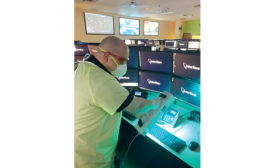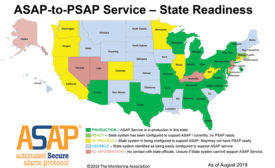Monitoring Today
PRIVACY
Balancing Privacy Concerns With Video Monitoring Capabilities
As video monitoring becomes more popular, the industry has a responsibility to protect consumers’ privacy.
July 13, 2020
SDM VIDEO MONITORING TODAY EXCLUSIVE
Video Monitoring & COVID-19
While the coronavirus and resulting economic impacts have brought their share of challenges to the security industry, the video monitoring space has been in a prime position to help customers — and grow business.
July 3, 2020
VIDEO MONITORING
Solutions for the New Normal
In this contributed column from The Monitoring Association, Steve Walker and Rob Baxter discuss solutions for the new normal post-COVID-19.
June 29, 2020
ALARM COMMUNICATION
ASAP-to-PSAP: The New Gold Standard for Alarm Monitoring
The Monitoring Association’s ASAP-to-PSAP service could revolutionize the way your monitoring center operates.
January 13, 2020
MT Insider News
SureView Systems Integrates With AI Provider Jemez Technology
January 10, 2020
MT Insider News
NMC Welcomes Mark Matlock as Vice President of Sales for Contract Monitoring
January 10, 2020
Get our new eMagazine delivered to your inbox every month.
Stay in the know on the latest security marketplace trends.
SUBSCRIBE TODAY!Copyright ©2024. All Rights Reserved BNP Media.
Design, CMS, Hosting & Web Development :: ePublishing













